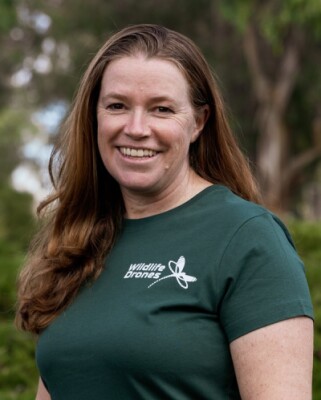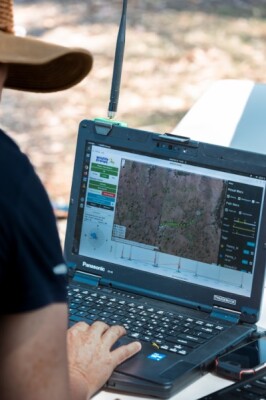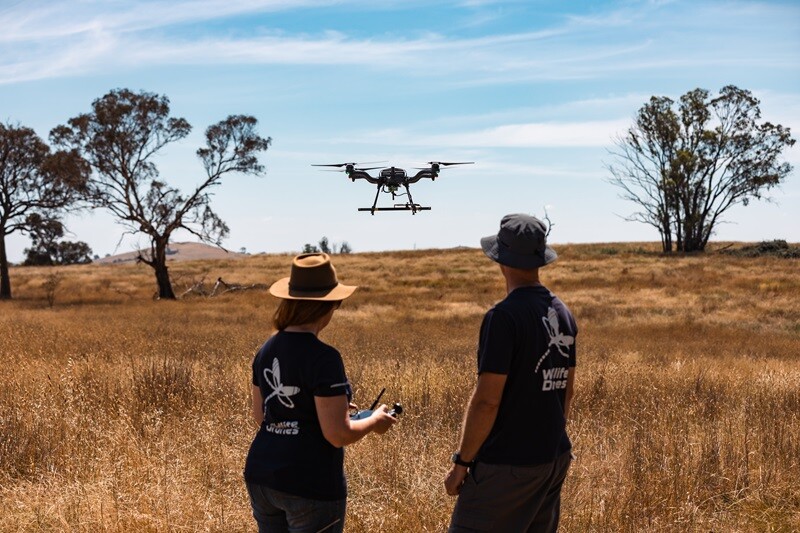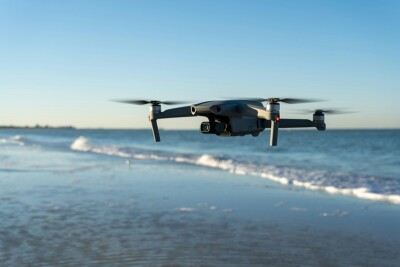Uncrewed technology has revolutionized conservation and wildlife management operations. From controlling geese on Stockholm’s beaches to instituting anti-poaching efforts in Africa to connecting students with unprotected ecosystems worldwide, uncrewed systems have been put to use in wildlife and conservation operations because of their ability to go into dangerous and hard-to-reach environments and collect vast amounts of critical, actionable data.
Recently, Commercial UAV News learned of yet another example of how drones are being adapted to wildlife management. The Australia-based company Wildlife Drones uses UAVs equipped with unique radio systems to track the movements of some of the world’s most endangered species.

According to company founder, ecologist Dr. Debbie Saunders, Wildlife Drones deploys “innovative drone tracking technology” to track animals with VHS radio tags so their movements and habitat use can be monitored. This approach, Wildlife Drones asserts, allows for simultaneous tracking that can monitor as many as 40 animals at once instead of just one animal at a time with typical hand-held receivers.
The company’s drones can fly in challenging environments, such as mountain ranges and remote wetlands, where they can track animals in a manner that does not impact the natural environment or alter the behaviors of the animals since it can locate the signals from a long distance away. What’s more, drones can do for wildlife management what they do for fields such as energy, surveying, and law enforcement—cover large areas to provide a wealth of accurate data in an efficient, cost-effective, and safe way.
To learn more about Wildlife Drones, Commercial UAV News spoke with Dr. Saunders.
Commercial UAV News: Tell us about your background. How did you get involved in tracking endangered species?
Saunders: I've always been fascinated by nature, and I'm passionate about the conservation of our fascinating wildlife and the ecosystems they are an integral part of. Early in my career, I focused on studying threatened species and their movements, particularly those of small migratory birds like the endangered Swift Parrot. My journey as a conservation ecologist, spanning over 25 years, has been driven by this passion and a relentless pursuit of innovative solutions.
Commercial UAV News: Why did you start using drones in your work?
Saunders: Traditional radio-tracking methods proved to be a constant source of frustration. The labor-intensive nature of tracking these elusive creatures across vast distances on foot often felt like an insurmountable challenge. Driven by the limitations of existing technology, I set out to find a better way. This led me to explore the potential of using drones for wildlife monitoring.
Commercial UAV News: What are the challenges associated with traditional tracking methods?
Saunders: Traditional wildlife tracking methods always come with inherent limitations and challenges. Manual tracking, in particular, can be a time-consuming, labor-intensive, and even risky endeavor. Researchers are restricted to tracking one animal at a time, potentially missing crucial data from other tagged individuals nearby.  The physical demands of covering vast distances on foot, navigating challenging terrains, and contending with unpredictable weather can be daunting. Furthermore, dense vegetation, treacherous swamps, or the presence of dangerous wildlife can render certain areas inaccessible or pose safety risks to researchers. And, of course, the very act of tracking can inadvertently stress or scare the animals, potentially impacting their behavior and survival.
The physical demands of covering vast distances on foot, navigating challenging terrains, and contending with unpredictable weather can be daunting. Furthermore, dense vegetation, treacherous swamps, or the presence of dangerous wildlife can render certain areas inaccessible or pose safety risks to researchers. And, of course, the very act of tracking can inadvertently stress or scare the animals, potentially impacting their behavior and survival.
Commercial UAV News: What kinds of drones, software, and sensors do you use at Wildlife Drones?
Saunders: Our drone-tracking technology is a powerful combination of readily available drones, cutting-edge software, and specialized sensors, designed to streamline wildlife monitoring. We've partnered with Freefly Systems to utilize their Astro drone, as its seamless integration with our payload and remarkably low VHF noise profile — the best we've found in extensive testing — makes it ideal for our sensitive wildlife tracking operations. Moreover, the Astro's US manufacturing aligns perfectly with the needs of our government clients.
Overall, we offer three principal components to enable this technology. First is the Dragonfly, a lightweight, easy-to-use payload that attaches seamlessly to Freefly System's Astro drone. Dragonfly boasts improved accuracy, a wider tag detection range, and enhanced reliability, setting a new standard for performance. We also use an antenna attached to the legs of the drone and works in conjunction with the Dragonfly. This ensures optimal signal reception from VHF radio tags attached to animals. We also use a base station, which receives data from the Dragonfly payload via a long-range communication system. Our unique mapping software processes this data in real-time, displaying the precise location of each animal on a map, even in areas without internet connectivity.
Commercial UAV News: Tell us about some of your projects.
Saunders: First, we track the Burmese python, an invasive species wreaking havoc on the Everglades' delicate ecosystem.
Traditional tracking methods prove inefficient in this vast and challenging terrain. Wildlife Drones' solution empowers researchers to efficiently track and locate these elusive predators, facilitating their removal and protecting native wildlife.
Also, we work in Vietnam tracking pangolins. They are the world's most trafficked mammal, and they are difficult to study due to their nocturnal habits and shy nature. In partnership with Save Vietnam's Wildlife, our technology is helping researchers track these elusive creatures, gathering crucial data on their behavior and habitat use to inform anti-poaching efforts and conservation strategies.
Another project we are involved in concerns bats in California. Bats play a vital role in ecosystems, but their nocturnal habits and small size make them difficult to study. The California Department of Fish and Wildlife is utilizing Wildlife Drones' system to monitor Myotis bat populations, enhancing our understanding of their roosting behavior and ultimately aiding in their conservation.
Commercial UAV News: What’s next for Wildlife Drones? Do you have new projects or enhancements to your systems in the works?
Saunders: At Wildlife Drones, innovation is at the heart of everything we do. Our dedicated team is constantly pushing the boundaries of what's possible in wildlife conservation technology. We're thrilled about our recent Dragonfly payload upgrade, which offers a smaller, more robust design and improved detection range. But we're not stopping there. We're currently developing exciting software advancements that we believe will once again revolutionize the way we track and study animals. While we can't reveal all the details just yet, stay tuned for updates!
In addition to technological advancements, we're also committed to enhancing our customer experience. We're actively exploring new drone platforms that offer extended flight times and greater range, ensuring our clients can access even the most remote and challenging environments.
This month, Wildlife Drones will be in the US conducting live demonstrations of the world-leading Dragonfly VHF tracking technology solution. Wildlife Drones x Bat Conservation International Demo
The Wildlife Society’s 31st Annual Conference 2024
|















Comments